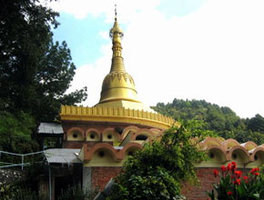Meditation is the key to inner peace, calmness. Therefore, we have different Meditation center in Nepal for that.
At Mediation Center , we are dedicated to promoting peaceful and effective conflict resolution through dialogue and understanding. Based in Nepal, our center provides a neutral and confidential environment where individuals, families, communities, and organizations can resolve disputes amicably, outside the courtroom.
We believe in empowering people to find their own solutions, guided by trained and experienced mediators who uphold principles of neutrality, confidentiality, and mutual respect. Whether dealing with family matters, community issues, business conflicts, or legal disputes, our goal is to foster harmony and sustainable resolutions rooted in Nepalese values and global mediation standards.
1. Spiritual sanctuary in Nepal
1.1 Discover Inner Peace and Clarity Through Daily Mindfulness
In today’s hectic world, where stress and distractions dominate, many are turning to the ancient practice of meditation to reconnect with themselves and find peace.
Meditation is not just silence—it’s a powerful tool to calm the mind, reduce anxiety, and enhance emotional well-being. With consistent practice, even a few minutes each day can improve focus, promote better sleep, and increase self-awareness.
Nepal, often called the spiritual heart of the Himalayas, is home to some of the world’s most renowned meditation center in nepal. With peaceful mountain settings and teachings rooted in Buddhist and yogic traditions, Nepal offers the perfect environment for both beginners and experienced meditators.
Getting started is simple: find a quiet space, sit comfortably, and focus on your breath. Don’t worry if your mind wanders—just gently return your attention to the present moment.
Meditation isn’t a quick fix; it’s a journey toward balance, clarity, and inner harmony. And the best time to begin is now.

2. What happens in meditation center?
While the course includes lectures, instructional tapes, a few meetings with the teacher, and some limited time for questions, the bulk of the ten days is spent within the autonomous, private sphere of a person’s own mind.
3. What are the types of meditation

3.1 There are nine popular types of meditation practice:
- mindfulness meditation.
- spiritual meditation.
- focused meditation.
- movement meditation.
- mantra meditation.
4. Best Meditation Center in Kathmandu
4.1 Dharma Shringa Vipassana Meditation Center

4.2 Shivapuri Baba Ashram

5. Vipassana in Nepal: A Journey Inward
- 5.1 Experience Deep Meditation and Self-Discovery in the Land of the Himalayas
n the heart of the Himalayas lies a timeless path to inner peace—Vipassana meditation. Rooted in ancient Buddhist traditions, Vipassana means “to see things as they really are.” It’s one of the oldest forms of meditation, offering profound mental clarity and emotional balance through self-observation and silence.
Nepal, with its serene landscapes and deep spiritual heritage, is an ideal destination for those seeking a genuine Vipassana experience. From the peaceful hills of Kathmandu Valley to the tranquil outskirts of Pokhara and Lumbini, many Vipassana centers welcome seekers from all over the world.
A typical Vipassana course lasts 10 days and follows a strict schedule of silent meditation, mindfulness, and noble silence—no talking, phones, or distractions. Participants learn to observe their thoughts, emotions, and bodily sensations with equanimity. It’s challenging, but transformative.
The Dhamma Shringa Vipassana Center near Kathmandu is one of the most renowned, offering authentic courses in the tradition of S.N. Goenka. These retreats are donation-based, making them accessible to all, regardless of background or belief.
Practicing Vipassana in Nepal is not just about escaping daily stress—it’s about discovering the stillness within. For those ready to look inward with courage and discipline, Nepal offers the perfect setting to begin or deepen the journey.
Frequently Asked Questions(FAQs)
Many guided meditation classes that made it into our top picks are available for free, but services like Headspace and Calm offer memberships in addition to free trials. The cost of in-person classes can range from 10000-20000, with an average of around 800 to 1000 per class.
Instead, he recommends meditating for no more than 20 minutes, and sometimes less than five. “For most people, 15 to 20 minutes will give you just the changes that you need,” Lakhiani says. “You can take a one- to three-minute dip into peacefulness.
Conclusion
Meditation centers in Nepal offer a unique and transformative experience, rooted in the country’s rich spiritual heritage and serene natural environment. Whether located in the Himalayan foothills or the peaceful Kathmandu Valley, these centers provide an ideal setting for self-discovery, mindfulness, and inner peace. With experienced teachers, structured programs, and a supportive community, they attract both beginners and advanced practitioners from around the world. Ultimately, a visit to a meditation center in Nepal is not just a retreat from daily life, but a journey toward deeper awareness and lasting well-being.